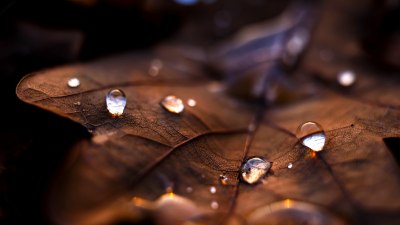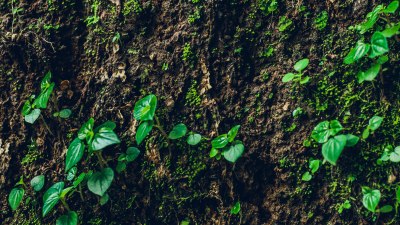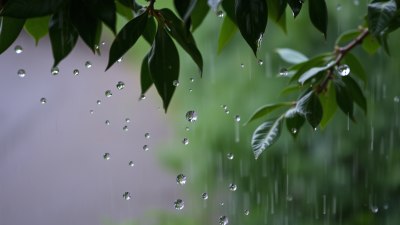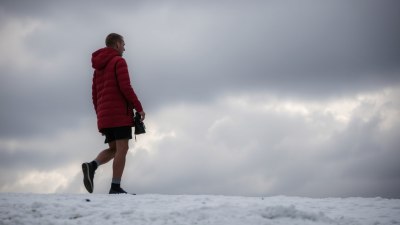How the Rain Finds the One Weak Spot in Your Shoe
Explore why rain always finds the one weak spot in your shoe and learn tips to prevent soggy feet on rainy days.
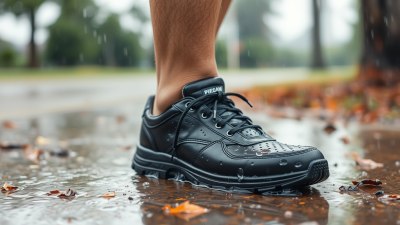
Image created with Flux Schnell
Have you ever noticed how, no matter what shoe you're wearing, rain always manages to find that single vulnerable point and sneak in? It's a frustrating experience, especially when you're out and about on a gloomy, wet day, hoping your feet will stay dry. But why does rain seem to find that one weak spot in your shoe, and what can you do about it? This article delves into the science behind this seemingly uncanny phenomenon and provides practical advice to keep your feet dry.
The Nature of Water and Its Persistence
Water is a remarkably adaptive liquid. When it rains, water droplets vary in size, and some can easily slip into the tiniest of gaps. The rainwater moves according to gravity and the contours of your shoe, seeking the path of least resistance. If your shoe is mostly waterproof but has a small flaw—a tiny hole, a weak seam, or a worn-out outsole edge—the water will exploit it. Surface tension allows water to wick into narrow crevices, even against gravity sometimes, especially when your foot moves and flexes, creating varying pressure points.
Moreover, water can penetrate materials that seem waterproof initially, particularly if those materials are porous or have been compromised by wear and tear. Even high-end water-resistant shoes are not inherently 100% waterproof unless specifically designed with sealed seams and specialized membranes.
Common Weak Spots in Shoes
Understanding where your shoes are most vulnerable helps explain why rainwater intrudes. Several areas are typically prone to leaks:
1. Seams and Stitching: Seams are where two parts of a shoe are joined, often by stitching. While stitching is necessary for structure, it also presents tiny holes that can allow water entry. Unless seams are sealed or taped, they serve as channels for water.
2. Eyelets and Laces: The holes used for laces can be points of entry. When rain runs down the tongue or laces, water can seep through these openings, especially if the tongue is not gusseted or doesn't have a waterproof lining.
3. The Shoe Tongue: If the tongue is not attached on the sides (ungusseted), water can flow down into the shoe between the tongue and the foot. This spot often intrigues those who find their socks soaked without external leaks.
4. The Sole and Upper Connection: This junction often undergoes a lot of stress. Over time, the glue or stitching that holds these parts together can deteriorate, creating miniature gaps for rain to penetrate.
5. The Outsole Edges: Some shoes allow water to seep in along the edge of the sole when submerged or during heavy splashes.
Materials and Their Role in Water Resistance
The material of your shoe significantly affects its ability to repel water. Traditional leather, when treated, provides some resistance, but untreated leather absorbs water. Synthetic materials like Gore-Tex and other waterproof membranes create barriers that keep feet dry while maintaining breathability. However, the efficiency of these materials depends on their condition and how well the shoe is maintained.
Over time, dirt and debris can clog the pores of breathable membranes, reducing effectiveness. Similarly, moisture inside the shoe can accumulate through sweat, making it feel like water has entered, though it never actually penetrated from the outside.
The Role of Wear and Tear
Even the best-designed shoe will eventually develop weaknesses. Scuffs, cracks, worn-out soles, and loosened stitches all contribute to creating a 'weak spot' where water can squeeze through. Shoes exposed to harsh weather frequently face faster degradation.
Many people overlook regular shoe maintenance, which can prolong the longevity of waterproofing. Conditioning leather, applying waterproof sprays, and replacing worn soles or resealing seams are ways to maintain the shoe's defense against rain.
How Different Types of Rain Affect Your Shoe
Not all rain is created equal. A light drizzle evaporates quickly and is less likely to soak through your shoes, while heavy rain or prolonged exposure subjects the footwear to continuous moisture pressure. Wind-driven rain can force water into areas it would not normally reach, increasing the chance of leakage.
Furthermore, walking through puddles or slushy conditions increases the likelihood of water entering through low points or damaged spots on the shoe. This interaction with environmental conditions is why you may remain dry walking in the rain but get soaked crossing a puddle.
The Effects of Shoe Fit and Foot Movement
Your foot's movement inside the shoe changes pressure dynamics continuously. Flexing when walking or running compresses certain parts of the shoe, expanding minor cracks and causing the internal lining to shift. This shifting can temporarily open small gaps that let water in.
A shoe that fits poorly—too loose or too tight—can exacerbate this effect by allowing your foot to slide around or creating excess strain on specific parts of the shoe. Ensuring a proper fit reduces these mechanical stress points and minimizes entry paths for rainwater.
Practical Tips to Protect Your Shoes from Rain
Even though rainwater is persistent, here are several steps you can take to protect your shoes:
1. Choose Proper Footwear: Invest in quality waterproof shoes designed with sealed seams and waterproof membranes like Gore-Tex.
2. Maintain Your Shoes: Regularly clean and treat your shoes with waterproofing sprays or waxes, especially before the rainy season.
3. Use Waterproof Socks or Overboots: Waterproof socks act as a secondary barrier, while overboots can be worn over regular shoes for intense rainfall conditions.
4. Pay Attention to Shoe Fit: Make sure your shoes fit properly to minimize internal movement and pressure that can create gaps.
5. Avoid Puddles: When possible, step around puddles or use waterproof boots specifically designed for wet areas.
6. Repair Damage Promptly: If you notice cracks, worn soles, or loose stitching, repair them quickly to prevent leaks.
Innovations in Waterproof Footwear
Recent advances have improved waterproof shoes significantly. Some brands now use full waterproof membranes covering the entire shoe, eliminating seams as weak points. Nanotechnology coatings are being developed to create highly water-repellent surfaces without sacrificing breathability.
3D knitting allows for seamless, flexible upper parts that reduce stitching. Self-healing materials and adhesives are being explored to repair minor damages automatically. These technologies aim to minimize the chance of that elusive weak spot appearing and compromising dryness.
Understanding When to Replace Your Shoes
Even with the best care, some shoes will simply reach a point where maintaining waterproofing is no longer practical or cost-effective. Signs it's time to replace shoes include chronic leaks, persistent foul odors from trapped moisture, deteriorated soles, and visibly damaged uppers or seams.
Replacing shoes before total failure will save you from repeated discomfort and possible foot health issues like blisters or infections caused by prolonged exposure to moisture.
The Psychological Impact of Wet Feet
Besides the physical discomfort of soggy shoes, wet feet can affect your mood and energy levels. Cold, damp feet tend to make people feel restless and stressed, sometimes leading to a reluctance to go outside in bad weather. By understanding why water targets the weak spot in your shoe and learning how to mitigate it, you can reduce this negative psychological impact.
Comfort and confidence in your footwear improve your overall well-being, especially in climates where rainfall is frequent.
Myth-Busting: Not All Waterproof Shoes Are Breathable and Vice Versa
Many people assume 'waterproof' means completely impervious to water, but in reality, waterproof shoes balance water resistance with breathability.
Completely sealed shoes without breathable membranes may keep water out but trap sweat inside, causing moisture buildup from the inside. Breathable shoes allow sweat vapor to escape but may not handle heavy rain well unless using specialized membranes.
Choosing the right type depending on your climate and activity is crucial to avoid discomfort.
DIY Methods to Seal Weak Spots
If you identify a leak, you can try several do-it-yourself methods to fix it temporarily:
1. Shoe Goo or Waterproof Adhesive: These sealants can patch holes or gaps in soles and seams.
2. Seam Tapes: Applying seam tape inside the shoe creates extra water barriers.
3. Waterproofing Sprays: Reapplying these sprays regularly helps maintain water repellency.
4. Wax or Silicone-Based Treatments: Especially effective on leather, these treatments add a hydrophobic layer.
While these fixes may not be permanent, they often help extend the life of your shoes and keep that pesky wet spot at bay for a while.
Why It Matters: Health and Comfort
Persistent exposure to wet shoes can cause health issues such as athlete's foot, fungal infections, or cold-related problems. Beyond health, the discomfort of wet feet can detract from productivity and enjoyment of daily activities.
Therefore, taking proactive steps to keep your feet dry is not merely about convenience but also wellbeing.
How Environment Influences Shoe Durability
Shoes exposed to urban environments encounter different wear agents like salt from road treatments, which can degrade materials faster. Rural or hiking shoes face abrasive surfaces, mud, and water repeatedly impacting seams and soles.
Understanding the environment in which your shoes are used helps to select and maintain them accordingly, preventing rainwater from exploiting weak spots.
The Role of Technology in Predicting Weak Spots
Manufacturers are increasingly using computer modeling and stress tests to predict areas where shoes might fail. This data allows them to reinforce those points before sale, improving overall water resistance. Consumers benefit from this research by having access to footwear better designed to handle wet conditions.
Why Rain Finds That Weak Spot
The rain finds the one weak spot in your shoe because water is adaptive, seams and stitching create unavoidable entry points, wear and environmental stress degrade shoe materials, foot movement inside the shoe creates dynamic pressures, and not all waterproof materials are flawless or permanent.
By understanding these factors and maintaining your shoes properly, you can minimize leaks and keep your feet dry and comfortable in the rain.
Next time you step out in wet weather, consider the design and condition of your footwear carefully — with a bit of knowledge and preventive care, you can prevent water from finding that one troublesome weak spot.
